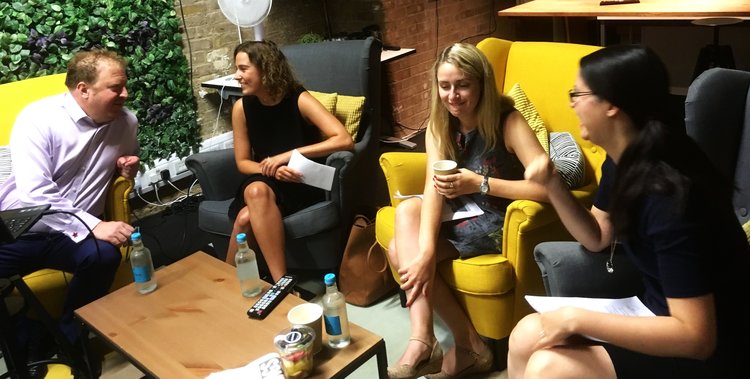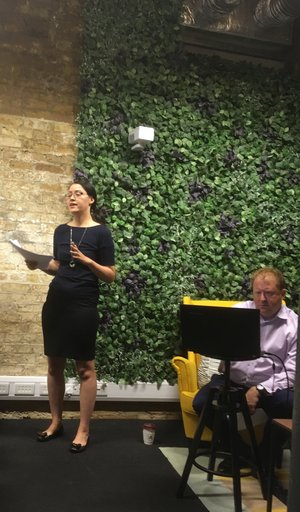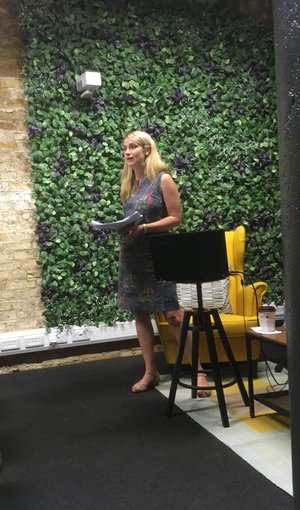Market research is a great way of getting coverage for your brand and can add real depth and breadth to your campaign. Whether it’s Top 10 lists, public opinion on a topic, or picking out changing or developing trends in behaviour, surveys offer something extra than a conventional news story. They offer a human element and insight into how people are living.
We invited Hollie Goodall, Planning Producer at Sky News Sunrise and Angela Wormald, Deputy News Editor at the Daily Mirror to talk about what makes a good survey story and how to cut through the noise and get it covered by the media. They were accompanied on our panel by our Head of News and former Deputy News Editor at The Daily Mirror, Piers Eady, and Project manager at our in-house research division, Atomik Research, Alice Goody.

In case you missed it here are their key tips on how to use your research effectively:
1. MAKE SURE THE RESEARCH IS NEW AND INTERESTING
It may sound obvious but if your research isn’t new, it’s not going to make. Tell your audience something they don’t already know otherwise what’s the point in running the research? Does your research reflect any new consumer or lifestyle trends? Are the results unexpected? All of these things are likely to catch the eyes of editors and producers. Not only that but finding out something new is going to make the commissioner of the research stick in people’s minds, thus boosting brand recognition.
If your research does reflect a change, think about what’s behind that change or what’s driving it? This could be where you use your spokesperson to add some comment or insight to your survey’s findings and give your story real strength.
Finally, make sure your stats are relatable. To really maximize the relatability think about which publications or broadcasters you are targeting. What do their audiences care about? Angela emphasized that for The Mirror, the surveys most likely to make are centered around things such as shopping, eating, dating, etc. Not only are these the key areas for The Mirror’s audience but they are also things that we all do and therefore things we all care about. So if you’ve got a survey showing that X number of people are buying luxury sports cars or designer handbags every year, maybe think again about whether that story is relevant to the masses.

2. MAKE SURE YOUR DATA IS RELIABLE
This is perhaps the most important point when running a survey, specifically when considering whether it’s going to make headlines, let along get any coverage at all. The first thing media outlets will want to know about your survey is the sample size. Unless there is a very good, justified reason, the minimum number of respondents your survey should have is 1000 but ideally, journalists would be looking for 2,000. The reason? Because this gives you a stronger cross section of the population. Anything smaller and you can’t realistically say that this result is a reflection of general opinion.
Hollie also stated that the survey has to have enough evidence. This goes beyond survey size. Think about medical research. Paraphrasing Hollie’s example, if you’re surveying the likelihood of something affecting children in later life because of research on them as children is that going to make a full story? Yes, it may be an interesting finding and hypothesis but the reality is audiences are going to have to wait at least 18 years until the findings on that research can be proven, meaning there just isn’t enough evidence for a full story.
Journalists will also want to know that your data has come from a reputable research company that has a track record of supplying data to the media. If not it throws doubt on to the reliability of your survey and means that the data and questioning will have conformed to industry regulations and removed most potential risks for the publishers.
3. CASE STUDIES MAKE THE DIFFERENCE
Case studies give stories something vital – a human face. Remember that no matter who your intended audience, they have something in common. They are people. By adding a case study and a human face to your story you not only make it instantly more relatable but also provide evidence that your stats aren’t just nonsense and, depending on the research, give your audience an opportunity for empathy.
It was commented on by both Angela and Hollie that a case study can be the difference between good or mediocre survey stories becoming great stories. Whilst the data may be good, showing an example of how a person lives there life in an unusual or extreme way (backing up your research) is the really interesting element for publishers, broadcasters, and audiences alike, securing your better coverage for your story.
Also if your data reflects changes in another country and people are hard to gain access to back up what you’re data shows, is there any visual content that could provide the evidence? Photos of people acting a certain way or demonstrating the changes that your data discusses? Videos that capture cultures or behaviours? Hollie commented that these kinds of visuals are great assets to have when pitching to broadcasters as it gives them something to show on-screen during the interview.
4. THINK ABOUT YOUR SPOKESPERSON.
Who is fronting your campaign? It could be the key to your story getting picked up or ‘getting spiked’. This is something that not only came up in this breakfast seminar but has come up time after time across the series.
For print or online coverage a spokesperson can add breadth and depth by giving a voice to your story. But don’t just pick anyone. Think about how well relatable they are to the campaign. Do they have a link to the subject matter? Are you just recruiting them because it will be good brand exposure? Don’t just pick the CEO of your brand, unless it adds something more. Think about what their contribution adds to the article. Can they discuss it as a reflection of the consumer landscape or will they just use the opportunity as an advert? If it’s the latter, go back to the drawing board.
Whilst the choice of spokesperson is key across all media, for broadcast it’s imperative. Unlike in print or online, your spokesperson will be the face/voice of your research on TV and radio. They need to be able to talk coherently about the topic under discussion. Whilst they don’t need to memorize the stats, they will need to able to talk around the subject. It’s therefore not only important they are comfortable in front of the camera but also that they have a personal link to what they are talking about in order to bring anecdotal or passion to the discussion.
Although they don’t need to be ‘famous, celebrities can add a real hook to your campaign…as long as they are relevant. A famous face won’t be enough in itself. So for example, if your research looks at the number of people in the UK suffering from a certain ailment or illness, does your spokesperson suffer from it or look after anyone that does? If it’s about the number of people participating in sport, so they have a sporting pedigree?
As well as coming into front your campaign, think about the interview as a whole. Are they happy to deviate from the topic to talk about their own lives, or about things they have coming up? Are the prevalent in the news agenda?
Finally, this may seem obvious but if you want to land premium coverage then it’s vital that your spokesperson is available to do it. Schedules won’t wait for them. Ask them if they are free to be interviewed at any day or time other than your scheduled broadcast day.

5. THINK ABOUT THE NEWS AGENDA.
As we briefly discussed above think about whether your spokesperson may be able to tie in with the news agenda. Can they link your story to another story going out that day? Can you use them as a peg? Unsure of what we’re talking about? Hollie used an example of a mediocre story that hit her desk on Friday morning. Whilst the story itself was nothing special, Gloria Hunniford was down to front it. This changed the story from a potential bin candidate to a definite yes. Why? Because she’d be able to talk about the Cliff Richard damages verdict. She worked with the news agenda.
As well as thinking of how to use the news agenda in your favour, also think about how it might work against you. If there’s a big event happening or due to happen maybe hold off on the sell in. Unless your story is linked to a specific day then it’s worth your time to maximize its potential success rate.
Also if you’re not having much success during the week, remember that most publishers and broadcasters have weekend versions of their show/paper where features are more desirable. So if your story is more lighthearted why not delay it.
Other key quotes:
Angela: “There’s a trend in the industry for longer form content. So if you’ve got a Top 10/20/50 and it’s good, publishers will use the whole thing.”
Hollie: “Everything is subjective. Different editors like different things. Things can change from one day to the next.”
Alice: “Get your headline first. Once we’ve nailed down the headline that we are looking to achieve, we’d then think about how we see the story developing.“
